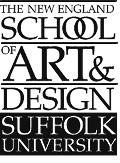 |

ART NOUVEAU (height 1890’s-1906 +-) |
| Vocabulary for this chapter | |
| Pictures for this chapter | |
| The Art Nouveau movement began in Belgium in early 1890’s around same time as the Arts & Crafts and Aesthetic movements. Art Nouveau blossomed all over Europe by 1900 and was highly demonstrated in the 1900 Paris Exhibition where cinematography was first introduced. (Note the relationship of motion films to the motion created by some art nouveau work in decoration and art prints). |
| Mood of the Day: Due to the Industrial Revolution, technology was gaining so much speed, the faster advances were made, the more people hung onto past styles in an attempt to surround themselves with something safe and familiar. In terms of the raising middle-class, that meant imitating past European styles. This is known as Historicism (a.k.a. Revivalism). Both the Aesthetics Movement and the Arts and Crafts Movement sought to improve public taste but each still relied on inspiration from past styles. |
| Theory Behind the Art Nouveau Movement:
To
create an entirely new style that would break the bonds of Historicism,
a style that owed nothing to the styles of the past (Art for the Art Sake).
But Art Nouveau was indirectly inspired by many past styles such as):
Gothic= return to handcrafted, artistic inspirations Baroque=manipulation of line, plastic( malleable, molten forms), often excessive & out of scale Rococo=Asymmetrical ornamentation, continuous linear movement, no relation to classical forms |
Chief Characteristics of
AN
• Reliance on the beauty of line, whether it’s the whiplash curve of the organic style showing motion and movement or the more static straight line the architectonic styles, the ornamental value of the line dominates all other considerationsAlthough AN was interpreted in different ways in various countries, certain elements were common
|
Known by different names in various countries:
|
| Even though artists continued to work in the AN style until the outbreak of WWI in 1914, it was being rejected after the Turin Exhibition of 1902 when a new movement, (Modern Movement) was introduced by designers from Germany & Austria who focused on new shapes, simplicity of form and honest materials, not just decoration, to solve stylistic problems. This new ‘Modern Style" actually developed from the rectilinear, geometric, architectonic AN style of Scotland and Vienna which was more abstract than the curvy variety and lead to the Vienna Secessions & Wiener Werkstatte studios, leaders of the Modern movements. |
AN Interiors:
• Ornamentation generally flat & 2-dimensional
• Mostly white walls or the alternative of gray-green relieved w/salmon pink• Stained glass w/curved leading as well as leaded glass windows w/plain or colored glass |
| The Art Nouveau style actually began in Belgium, (Brussels and Antwerp) which was the epicenter of AN in 1880’s. It got its influence from English A&C which began the battle of Industrial Age design in its cause to return to handcraftsmanship as the level of quality but AN takes things a step farther, total revolt against the "Enslavement to historical precedent and Academicism" |
Belgium:
|
| France:
Paris Style: More refined, less ponderous, artists with individualistic approach
|
Spain:
|
Scotland: The
Glasgow School architectonic style inspired by English Arts & Crafts
Plan of the house evolved from the inside out. Liked to live with his clients for a few days before designing for them. |
Austria: The Vienna Secession
Style architectonic style inspired by Mackintosh
|
| Syllabus | Neoclassical | Victorian | Modern | Contact Marg |